I am starting with Tensorflow 2.0 and trying to implement Guided BackProp to display Saliency Map. I started by computing the loss between y_pred and y_true of an image, then find gradients of all layers due to this loss.
with tf.GradientTape() as tape:
logits = model(tf.cast(image_batch_val, dtype=tf.float32))
print('`logits` has type {0}'.format(type(logits)))
xentropy = tf.nn.softmax_cross_entropy_with_logits(labels=tf.cast(tf.one_hot(1-label_batch_val, depth=2), dtype=tf.int32), logits=logits)
reduced = tf.reduce_mean(xentropy)
grads = tape.gradient(reduced, model.trainable_variables)
However, I don't know what to do with gradients in order to obtain the Guided Propagation.
This is my model. I created it using Keras layers:
image_input = Input((input_size, input_size, 3))
conv_0 = Conv2D(32, (3, 3), padding='SAME')(image_input)
conv_0_bn = BatchNormalization()(conv_0)
conv_0_act = Activation('relu')(conv_0_bn)
conv_0_pool = MaxPool2D((2, 2))(conv_0_act)
conv_1 = Conv2D(64, (3, 3), padding='SAME')(conv_0_pool)
conv_1_bn = BatchNormalization()(conv_1)
conv_1_act = Activation('relu')(conv_1_bn)
conv_1_pool = MaxPool2D((2, 2))(conv_1_act)
conv_2 = Conv2D(64, (3, 3), padding='SAME')(conv_1_pool)
conv_2_bn = BatchNormalization()(conv_2)
conv_2_act = Activation('relu')(conv_2_bn)
conv_2_pool = MaxPool2D((2, 2))(conv_2_act)
conv_3 = Conv2D(128, (3, 3), padding='SAME')(conv_2_pool)
conv_3_bn = BatchNormalization()(conv_3)
conv_3_act = Activation('relu')(conv_3_bn)
conv_4 = Conv2D(128, (3, 3), padding='SAME')(conv_3_act)
conv_4_bn = BatchNormalization()(conv_4)
conv_4_act = Activation('relu')(conv_4_bn)
conv_4_pool = MaxPool2D((2, 2))(conv_4_act)
conv_5 = Conv2D(128, (3, 3), padding='SAME')(conv_4_pool)
conv_5_bn = BatchNormalization()(conv_5)
conv_5_act = Activation('relu')(conv_5_bn)
conv_6 = Conv2D(128, (3, 3), padding='SAME')(conv_5_act)
conv_6_bn = BatchNormalization()(conv_6)
conv_6_act = Activation('relu')(conv_6_bn)
flat = Flatten()(conv_6_act)
fc_0 = Dense(64, activation='relu')(flat)
fc_0_bn = BatchNormalization()(fc_0)
fc_1 = Dense(32, activation='relu')(fc_0_bn)
fc_1_drop = Dropout(0.5)(fc_1)
output = Dense(2, activation='softmax')(fc_1_drop)
model = models.Model(inputs=image_input, outputs=output)
I am glad to provide more code if needed.

